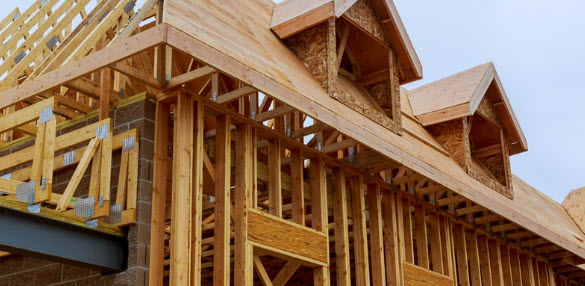Feeling like your home equity could be working harder for you? A Home Equity Line of Credit (HELOC) is a financial product designed to give homeowners access to that built-up value. But it’s not a decision to take lightly. To help you navigate the world of HELOCs, we’ll explain the mechanics, weigh the pros and cons, and offer practical advice so you can confidently determine if this is the right way to leverage your home’s potential and achieve your financial objectives.
What Exactly Is a Home Equity Line of Credit?
Think of a HELOC as a flexible, revolving line of credit that uses your home as security. It works a bit like a credit card, giving you a set amount of money you can borrow against as needed during a specific period, usually 5 to 10 years. This is called the draw period. During this time, depending on your lender’s terms, you might only need to make interest-only payments. Once the draw period ends, you enter the repayment period, which typically lasts 10 to 20 years, where you’ll pay back both the principal (the amount you borrowed) and the interest. (Source: Investopedia)
How Does a HELOC Actually Work?
- The Application Process: When you apply for a HELOC, lenders will look closely at your credit history, how much equity you have in your home, and your debt-to-income ratio to decide if you qualify and what your credit limit will be.
- The Draw Period: Once approved, you can borrow money up to your credit limit whenever you need it. Remember, you only pay interest on the amount you actually borrow. Minimum payments during this phase might be interest-only, depending on your agreement with the lender. (Source: Investopedia)
- The Repayment Period: After the draw period ends, you can no longer borrow more money. You’ll then start paying back the outstanding balance, including both the principal and the interest, usually through fixed monthly payments over a set term. (Sources: SmartAsset, Investopedia)
The Upsides of Using a HELOC
- Flexibility is Key: You only borrow what you need, when you need it. Plus, you only pay interest on the funds you’ve actually drawn.
- Potentially Lower Interest Rates: Because HELOCs are secured by your home, they often come with lower interest rates compared to unsecured options like personal loans or credit cards. (Source: Bankrate)
- Possible Tax Benefits: The interest you pay on a HELOC might be tax-deductible if you use the funds for home improvements. However, it’s always a good idea to consult with a tax professional for personalized advice.
Important Risks and Things to Consider
- Variable Interest Rates: Most HELOCs have interest rates that can change over time based on market conditions. This means your monthly payments could go up, and your overall borrowing costs could increase if rates rise. (Source: Investopedia)
- Your Home is the Collateral: Since your home secures the HELOC, failing to repay the borrowed amount could lead to foreclosure. This is a significant risk to be aware of. (Sources: Bankrate, PNC Bank)
- The Temptation to Overborrow: Having easy access to funds might lead some people to borrow more than they truly need, which can create financial strain down the road.
Real-World HELOC Example
Imagine a homeowner with a good amount of equity who decides to use a HELOC to finance a major kitchen renovation. They borrow $30,000 during the draw period, initially making interest-only payments to keep their monthly costs lower during the construction. Once the beautiful new kitchen is complete and the repayment period begins, they start making payments that include both principal and interest. This not only gives them a fantastic new kitchen but also potentially increases their home’s overall value. (Source: Investopedia)
What’s Happening with HELOCs Today?
More and more homeowners are tapping into their home equity using HELOCs. In the first two quarters of 2024 alone, lenders originated approximately 671,000 new HELOCs, totaling nearly $105 billion. This is the highest level we’ve seen since early 2008, indicating a growing trend. (Sources: Home, Financial Times, CoreLogic, Bankrate)
Your Frequently Asked Questions About HELOCs
Q: How is a HELOC different from a home equity loan?
A: Both use your home’s equity as security, but a HELOC is a flexible line of credit with variable interest rates, allowing you to borrow as needed. A home equity loan, on the other hand, provides a lump sum of money with a fixed interest rate and a set repayment schedule. (Source: CBS News)
Q: Can I use HELOC funds for anything I want, not just home improvements?
A: Yes, the funds from a HELOC can be used for various purposes, such as consolidating other debts, covering education expenses, or handling unexpected emergencies. However, it’s crucial to be responsible with how you use the funds, keeping in mind the risks involved.
Q: What happens if I decide to sell my house while I still have a balance on my HELOC?
A: When you sell your home, the proceeds from the sale will first be used to pay off any remaining balance on your HELOC, as it’s a loan secured by your property.
Q: Are there any fees involved in getting a HELOC?
A: Yes, just like with other loans, there can be fees associated with opening a HELOC. These might include application fees, appraisal fees to determine your home’s value, and closing costs. It’s important to discuss all potential fees with your lender upfront.
Q: How will opening a HELOC affect my credit score?
A: Opening a HELOC can have an impact on your credit score. It can affect your credit utilization ratio (the amount of credit you’re using compared to your total available credit) and result in a credit inquiry. Managing your HELOC responsibly, such as making timely payments, can positively influence your credit profile over time.
In Conclusion
A Home Equity Line of Credit can be a really useful financial tool, offering flexibility and access to funds at potentially lower interest rates. However, it’s essential to go in with your eyes wide open, understanding the risks involved and making sure that borrowing aligns with your overall financial goals and your ability to repay the borrowed amount. By carefully considering your needs and talking to financial professionals, you can make smart decisions about whether leveraging your home’s equity with a HELOC is the right move for you.



